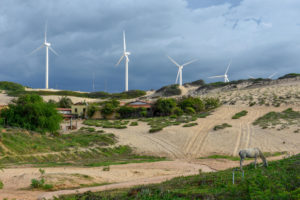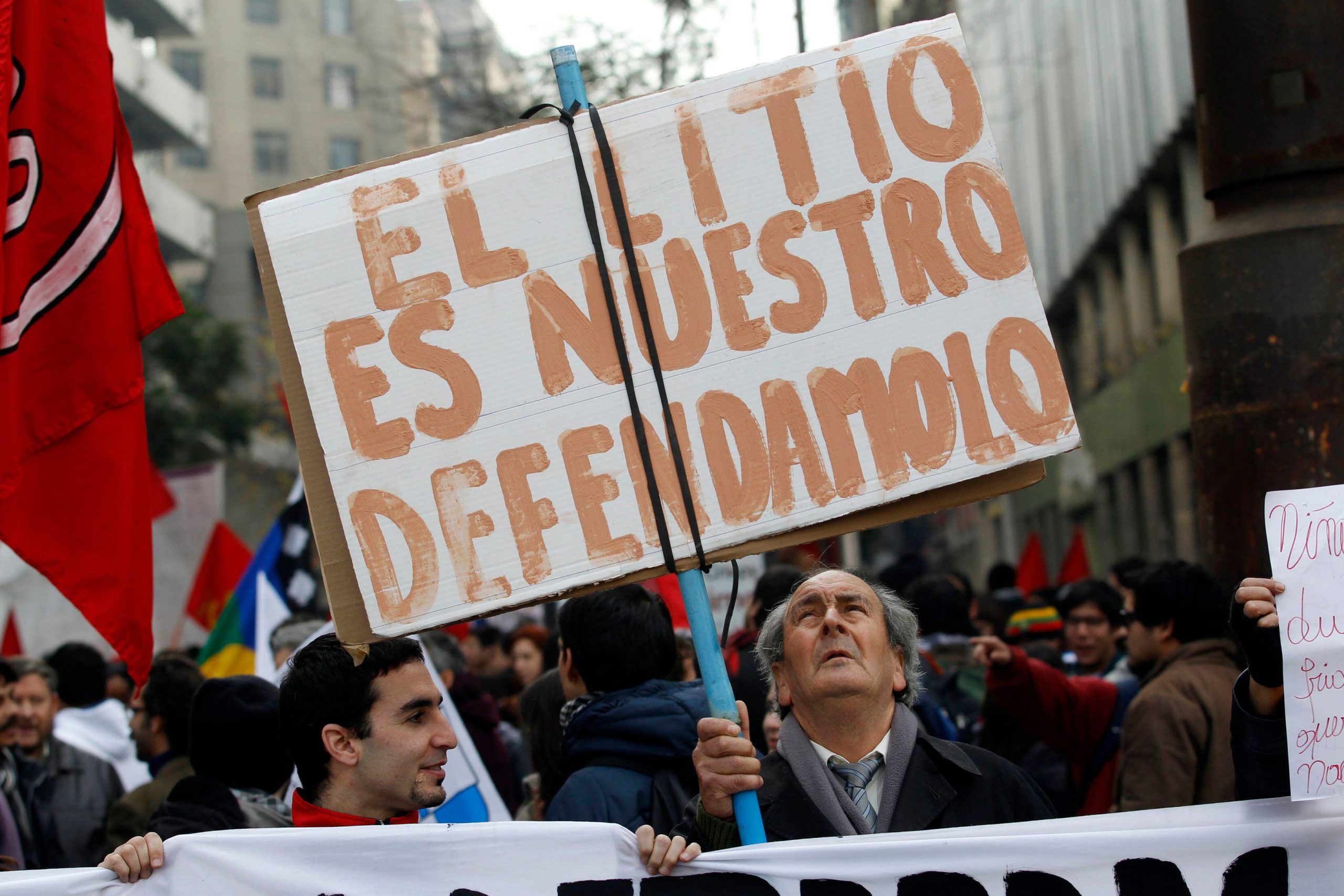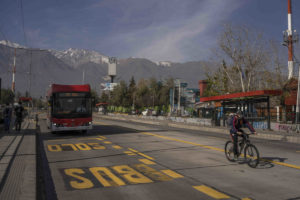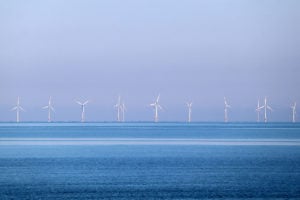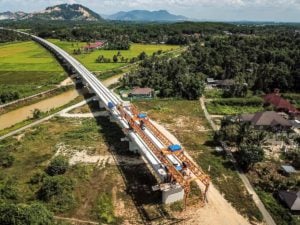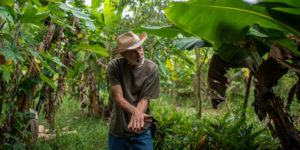The European Union is showing a renewed economic and strategic interest in Latin America. A wave of new investment could boost clean energy transitions in both regions, as the EU also looks to strengthen relations and supply chains in a changing geopolitical context.
In June, the EU announced 45 billion euros (US$48 billion) of investments during a summit with the Community of Latin American and Caribbean States (CELAC), a 33-country regional bloc. Under the banner of the Global Gateway, the EU’s global infrastructure investment strategy, more than 130 projects are set to be carried out over the next four years. These are focused on the region’s renewable energy, lithium, green hydrogen, communications, transport and health sectors, among others. Some initiatives will also focus on climate change mitigation.
“The strategic partnership between the two regions is more important than ever,” said European Commission President Ursula von der Leyen ahead of the EU-CELAC summit. Meanwhile, Brazil’s President Lula Da Silva said that he had “rarely seen so much political and economic interest from the EU countries towards Latin America.”
This renewed push for closer ties and investment comes as Europe looks to drive its own transition to clean energy sources, while weighing its international ties and energy security since Russia’s invasion of Ukraine in 2022. It also arrives in the context of the bloc’s aim of “de-risking” its relations with China, diversifying suppliers and reducing its dependency on the country for critical materials.
But since its launch in 2021, the Global Gateway has also been widely seen as the EU’s response to China’s Belt and Road Initiative (BRI). Under the BRI, billions of dollars of infrastructure investments have arrived in Latin American and Caribbean countries over the past decade. As the region looks to advance on clean energy and sustainable development, Europe’s new initiative may provide a valuable boost, and a complement and competition to Chinese investment.
Gateway to the energy transition?
The EU is already the leading investor in Latin America and is the region’s third largest trading partner, behind the US and China. As for the EU, Latin America is its fifth largest trading partner, behind China, the US, the UK and Switzerland.
There has been some optimism surrounding the Global Gateway and the prospect of deepening ties, given its boost to investment and emphasis on promoting a “green and fair” transition.
The bloc has sought to position itself as a leader in the industrial and technological development of the energy transition, and a partner in favour of decarbonisation. “We can provide know-how in environmental development,” said Spain’s acting prime minister, Pedro Sánchez, at the EU-CELAC summit.
In Brazil, among the initiatives set to arrive under the Global Gateway is the co-financing of solar and wind energy projects, with the support of the European Investment Bank and the individual participation of Denmark, Germany, Spain, the Netherlands, France and Portugal.
In Mexico, the intention is to develop the domestic capacity to build solar power plants, electric vehicles and battery production in the northern state of Sonora, with the support of the European Investment Bank and the participation of Denmark, Spain and France.
In Argentina, the EU has committed to support renewable energy projects, and expand and modernise the country’s electricity grid, with financing from the Inter-American Development Bank, the CAF Development Bank of Latin America and the Caribbean, the International Finance Corporation (IFC) and participation from Spain, France and Italy.
The development of green hydrogen is another focus of this new wave of European engagement. Chile will receive support from the European Commission, the European Development Bank and the German Development Bank, with the aim of supplying 15% of the global hydrogen market by 2050, while also helping Brazil to reach its aim of producing 500,000 tonnes of green hydrogen by 2030.
In its memorandum of understanding signed with the EU during the June summit, Uruguay also struck an agreement to cooperate on renewables-based hydrogen production, an industry which the current government hopes will form 2% of the country’s GDP by 2040.
“Europe has a huge need to diversify its energy mix … In particular, there is great interest in developing the green hydrogen sector,” said Gustavo Castagnino, corporate affairs director at Genneia, one of Argentina’s leading renewable energy suppliers. “Like the US and China, the EU is seeking to secure special relationships with strategic markets.”
Europe has a huge need to diversify its energy mixGustavo Castagnino, corporate affairs director at Genneia
The Global Gateway is said to herald a shift in the character of the two regions’ cooperation, towards investment involving a broader range of actors.
EU initiatives to date have tended to rely on funding from European institutions to help countries implement projects in waste management, sewage treatment and biodiversity protection, for example.
Luca Pierantoni, head of the cooperation section of the EU Delegation in Argentina, told Diálogo Chino that “the aim is now for the private sector to play a central role”.
“The intention is for European companies to invest in the region with the help of a system of guarantees and insured offered by the EU,” he said. In addition, the EU would offer credit and grants to the region’s states, he added.
Strategic resources
Beyond hydrogen, the EU’s other major point of interest is access to lithium, which is vital to the energy transition, given its use in electric vehicles, solar panels and battery storage.
The salt flats in Latin America’s “lithium triangle” of Argentina, Bolivia and Chile account for around 60% of global reserves of the metal.
The bloc’s memorandum of understanding signed with Chile focuses on lithium cooperation. The EU has recently sealed similar agreements with other key mining countries, including Argentina (June 2023), Namibia and Kazakhstan (both November 2022), Ukraine (July 2021) and Canada (June 2021).
It is estimated that demand for lithium, largely driven by the electrification of transport, will increase fivefold by 2035.
Faced with this prospect, and thanks to investments from US, European and Chinese companies, lithium production has already been on the rise in the lithium triangle. In Argentina, lithium exports are expected to increase eightfold in the next three years.
Lithium production has, however, faced scrutiny from communities located near mining sites, and from civil society organisations that warn about a lack of sufficient environmental controls. There are also ongoing debates about the contribution of lithium, as a mostly extractive sector, to wider economies – something that Chile is seeking to address with its new lithium strategy.
According to Pierantoni, the EU will look to address these concerns as it cooperates with Latin American countries, and build considerate partnerships: “Lithium is one of the main areas of work on the agenda between the European Union and the countries of the region. The objective is to have a greater presence in the sector and we want to do it the European way, that is, with strict adherence to environmental standards and through a process of dialogue with the different actors involved.”
Natural gas also appears to be on the table as a strategic resource, one that the EU considers to be a transition fuel to help it achieve net-zero greenhouse gas emissions by 2050. Since cutting imports of the fuel from Russia following its invasion of Ukraine, the EU has looked to grow its presence in the liquefied natural gas (LNG) market and is seeking to seal new agreements with reliable suppliers.
A draft agreement between the EU and Argentina stands out. The document, made public in June, indicates a commitment for Argentina to supply LNG to Europe. This arrangement is based on the prospect of increased production at the Vaca Muerta field, located in the province of Neuquén, and home to some of the world’s largest unconventional oil and gas reserves.
However, developing Argentina’s capacity to export LNG would require a huge investment, for example in liquefaction plants, something the EU has made no commitment to. The agreement has been criticised by some analysts, who say the EU should be focusing its investments on supporting renewable energy development in Argentina.
A Belt and Road alternative?
The Global Gateway is “in many ways, a reaction to China’s expanding presence in the global south,” Margaret Myers, director of the Inter-American Dialogue’s Asia and Latin America programme, told Diálogo Chino.
In the ten years since its launch, the Belt and Road Initiative (BRI), China’s flagship global infrastructure development programme, has delivered a cumulative US$1 trillion of financial investments and construction contracts across the globe.
Among the 148 countries to have signed up to the BRI are 21 from Latin America and the Caribbean. Meanwhile, China also has free-trade agreements with Chile, Costa Rica, Ecuador and Peru, and strategic partnership agreements with Argentina, Brazil, Chile, Ecuador, Mexico, Peru and Venezuela.
These diplomatic advances have accompanied a growth in China’s economic presence in the region, with trade between China and Latin America increasing 26-fold in the last 20 years, reaching a value of US$450 billion in 2022.
Between 2005 and 2022, China’s two main development finance institutions – the China Export-Import Bank and the China Development Bank – also issued over US$136 billion in project loans to Latin American and Caribbean governments and state-owned enterprises.
The energy sector has been a focus for Chinese investment in the region, with projects across hydropower, solar and wind power, oil and gas, as well as investment in electricity grids and their operators. Mining, notably of copper and lithium, has also been a key area of cooperation and investment.
According to Myers, though BRI investments have become notably greener in recent times, it is still difficult to gauge China’s commitment to supporting Latin America’s green transition, given the varied interests of Chinese investors, both in sectors with a high emissions footprint, such as oil and gas, and in renewables and critical minerals.
Looking forward, “certainly, Chinese companies will continue to seek access to minerals, such as lithium and cobalt, that are critical to supply chains,” Myers added.
Whether the EU can sustain long-term investment in a similar vein to the BRI remains to be seen. We will also see whether China continues to do so, with loans having dropped off in recent years and domestic economic woes beginning to bite. For Latin America itself, however, as the region looks to confront challenges, amid its own economic difficulties, the Global Gateway may present a new complement, rather than a challenge, to the BRI.
One analyst says the region’s officials must manage these engagements well, and demand high standards.
“There may be tensions between the European and Chinese projects,” says Sergio Cesarin, a researcher on China at Argentina’s National Scientific and Technical Research Council (CONICET). “But the region’s governments must be able to manage external investment interest for the benefit of promoting development and improving the quality of life.”
